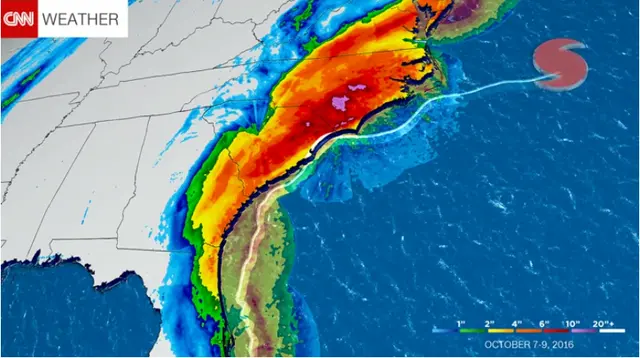If it feels like it hasn't rained in months in the South, you're right. The region is experiencing an extreme drought. But just a few months earlier, we were talking about record-breaking floods in the South. These shocking extremes are happening more often, and it is all part of an unfortunate new normal in a world with climate change.
As global temperatures continue to warm, we will also see a shift in day-to-day weather events. Most climatologists agree that calling it global warming was a mistake; climate change deniers will point at an extreme snow storm, like the New York blizzard of 2016, and sarcastically ask, "Where is global warming now?"
But global warming doesn't mean people around the world will no longer receive cold weather and snow. It is true that we could see a decrease in the number of cold-weather events, but the ones we will have could be more extreme. For example, more high-temperature records were broken over the past four decades in the United States than low-temperature records, according to a study published in 2009.
What is certain is warmer, even record-breaking, global temperatures will cause an increase in droughts and heavy rains all across the world.
Dire droughts
A drought is one of the less surprising impacts of climate change, and the effects can be devastating to crops and livestock. With increased temperatures, there is increased evaporation, leaving some areas abnormally parched.
While a lack of rainfall is a problem, the bigger issue is that the length of time between rain events is increasing.
The Southeast is experiencing its worst drought since 2007-2008. Birmingham, Alabama, hasn't seen rain since mid-September. Atlanta has gone 42 consecutive days without rain, which broke the record for the longest stretch of days without precipitation.
Atlanta has received only 2% of the city's usual average rainfall in the past 60 days. But Atlanta is expected to have more rain in the next two days than the city has gotten since September 2.
Weather is nature's way of trying to create balance. Cooler air moves from the Arctic to mix with warmer air from the tropics to create an equilibrium. But instead, it creates a pendulum of weather events moving. Climate change is causing that pendulum to swing harder and faster.
Atlanta's 2007-2008 record-breaking drought was followed in 2009 by one of the most massive floods the city had ever seen. Atlanta received more than 15 inches of rain in 18 hours.
Flooding flourishes
Just as we have seen an increase in droughts, we have also seen a rise in floods.
Four studies
have concluded that water vapor in the atmosphere is increasing globally. This happens because warmer air results in more evaporation, and evaporation leads to more available water vapor to create precipitation. That could be why we are seeing more floods.
Covering a flood when it hits home. Photo: CNN
Flooding in Louisiana in August was the worst disaster to hit the United States since Superstorm Sandy. In one week, 6.9 trillion gallons of rain fell, and it wasn't even a named storm or a hurricane. It was simply a slow-moving system that stalled over Louisiana, dumping way more rain than the soil could soak up. Watson, Louisiana, had 31.39 inches of rain during the storm. Nearby Baton Rouge received "only" a little over 19 inches. According to the US Geological Survey, six stream gauges set records and 50 stations were overtopped by floodwaters.
Hurricane damage and forest fires
Named storms are known for their ability to soak and devastate. Indeed,there are still towns in the eastern half of North Carolinathat look like Hurricane Matthew just hit. In some areas, the floodwaters still haven't receded from the record-breaking rainfall caused by the storm, which hit the state in October. Hurricane Matthew even dumped torrential rains far inland. In Fayetteville, North Carolina, about 80 miles from the coast, 14 inches of rain fell in 24 hours. This shattered the 3.4-inch record set in 1996.
However, Western North Carolina is suffering from the opposite problem. It is struggling with extreme drought conditions as wildfires continue to burn. Asheville, North Carolina, hasn't had rain since October 21, and then it was only one-hundredth of an inch. Nearly 20 large wildfires are still burning in the national forests of North Carolina.
Climate change is not about one place affected. It's about the impact on the overall weather pattern. We are all going to continue to see extremes. The only question will be how extreme and how will we prepare.
(CNN)
 简体中文
简体中文

